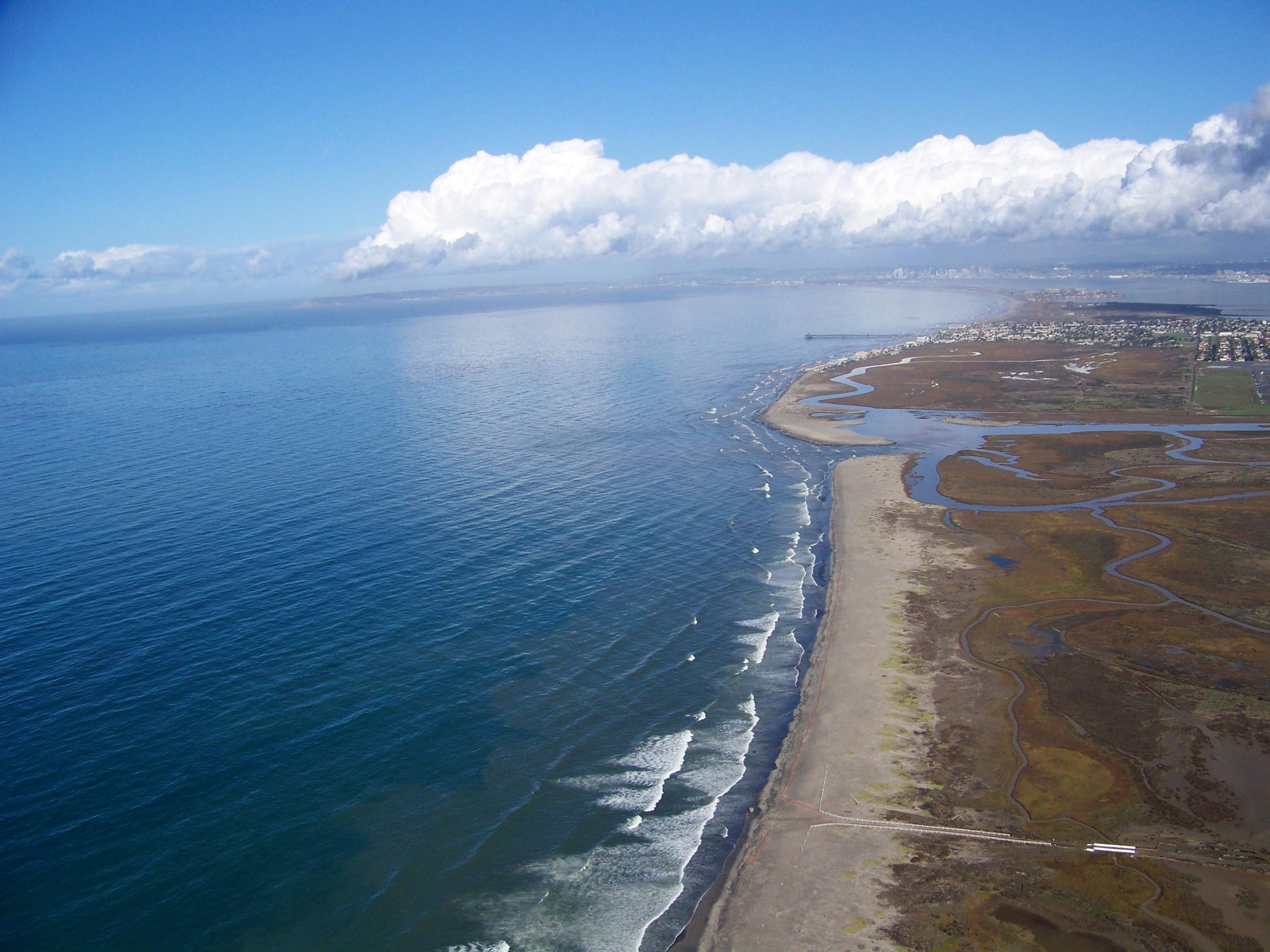
Instruments in space are helping scientists map wastewater plumes flowing into the Pacific Ocean from the heavily polluted Tijuana River, seen here with the San Diego skyline to the north. Credit: NOAA
High-Tech Eyes in the Sky
When NASA’s EMIT (Earth Surface Mineral Dust Source Investigation) launched aboard the ISS in July 2022, its mission was to map desert dust. But this powerful sensor is now exposing a different kind of danger—pollution from wastewater off the Southern California coast.
Turning Satellites Into Ocean Detectives
Tracking the Tijuana River Plume
Every year, the Tijuana River discharges millions of gallons of wastewater—treated and untreated—into the Pacific near San Diego. This pollution poses health risks to local communities, ecosystems, and even U.S. Navy personnel.
How EMIT Detected the Pollution
Originally designed to identify mineral dust, EMIT uses hyperspectral imaging to analyze sunlight reflected off Earth. This allows it to detect unique “spectral fingerprints” of substances—including phycocyanin, a pigment found in wastewater-associated cyanobacteria.
A Breakthrough Finding
Researchers matched EMIT’s spectral data with water samples taken near the Tijuana River. The result? A clear correlation pointing to sewage contamination, confirmed by lead scientist Eva Scrivner as a strong signal of wastewater presence.
Beyond Visible Light: Hyperspectral Advantages
From Algal Blooms to Invisible Contaminants
Traditional satellites rely on visible changes—like green or red water during algal blooms. EMIT goes further, detecting contamination even when no color change is visible, thanks to its fine spectral resolution.
Benefits of Remote Water Monitoring
- Faster response: Identify pollution before it spreads or causes harm
- Lower costs: Avoid expensive ground-based water sampling
- Global potential: Scale this method to monitor coastal regions worldwide
A New Era of Environmental Protection
Christine Lee of NASA’s Jet Propulsion Lab emphasized EMIT’s value in spotting plumes that go unsampled. This spaceborne perspective allows us to track pollutants in real time and take action sooner—an urgent need in a world of rising coastal threats.
What’s Next for EMIT and Environmental Satellites?
Global Water Surveillance?
As tools like EMIT continue proving their worth, they could form part of a global network to monitor water quality from orbit, protecting both people and marine ecosystems on a planetary scale.
Questions to Spark Curiosity
- Could satellites routinely scan every major coastline for signs of sewage or toxins?
- What other pollutants might be revealed by future hyperspectral sensors?
Stay Curious, Stay Informed
NASA’s unexpected wastewater detection is just one example of how space tech is reshaping environmental science. What else might be hiding in plain sight—waiting for the right eyes to uncover it?
Reference: “Hyperspectral characterization of wastewater in the Tijuana River Estuary using laboratory, field, and EMIT satellite spectroscopy” by Eva Scrivner, Natalie Mladenov, Trent Biggs, Alexandra Grant, Elise Piazza, Stephany Garcia, Christine M. Lee, Christiana Ade, Nick Tufillaro, Philipp Grötsch, Omar Zurita, Benjamin Holt and Daniel Sousa, 8 May 2025, Science of The Total Environment.
DOI: 10.1016/j.scitotenv.2025.179598
Daily science news 2025, Best science blogs 2025, New science research 2025, Popular science articles, Latest science news 2025










